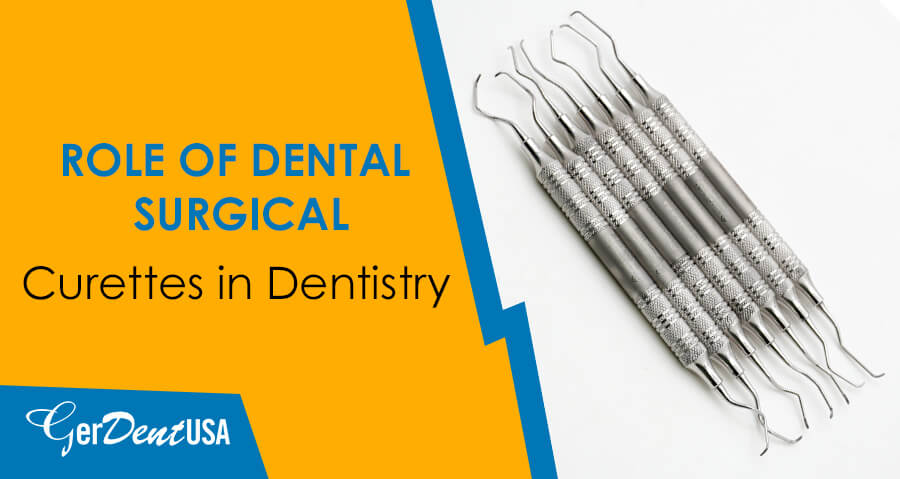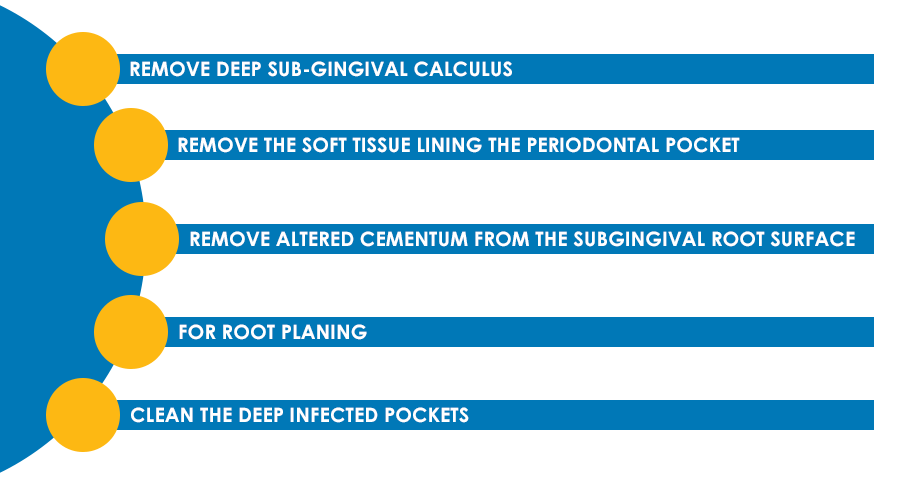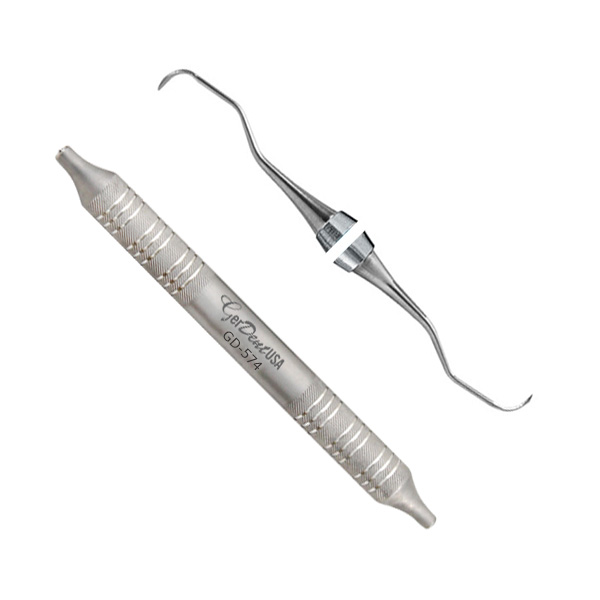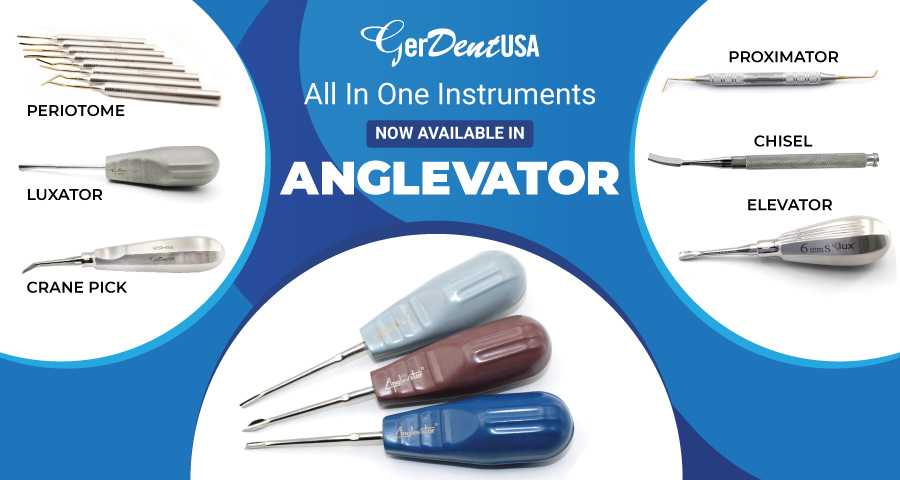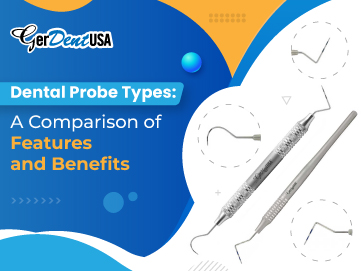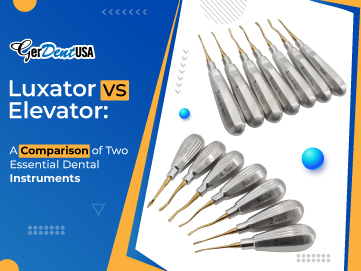Dental Curettes are surgical instruments for removing deep sub-gingival calculus. They are also used for root planning and for removing altered Cementum. These are also suitable for removing the soft tissue lining the periodontal pocket.
Dental Curettes are Used to:
Patterns Of Curettes
Curettes are manufactured in different patterns to aid multiple dental cases. Here are some significant patterns. See which suits you best!
The Universal Curette is for easy adaptation on all tooth surfaces. The blade of these curettes has a round toe for cutting. In addition, the blade has two cutting edges for scaling. The cutting edges make it efficient for scaling the entire mouth.
Furthermore, these are for use in all teeth. This is done by altering the finger rest position and adjusting your hand position.
Area Specific Curettes
These are a set of dentistry instruments designed for use in a specific area of the mouth. This dental instrument is designed in a way that it adapts to specific areas of the dentition. Hence, these instruments are preferred for deep gingival or root level scaling. The most popular area-specific curette is Gracey curette. The blade design is offset as compared to the terminal shank at 70 degrees. The offset blade provides perfect angulation for the tooth surface. Different types of Gracey dental curettes are available for use in the entire dentition. Furthermore, all Gracey designs are available with a wider taper. These have rigid shanks.
The correct adaptation for the Gracey curette is when the blade is correctly adapted. This is when the lower cutting shank is against the tooth. Also, the terminal shank is parallel to the tooth surface being scaled. Next, apply lateral pressure against the tooth (root) and pull upwards.
Types Of Gracey Curettes
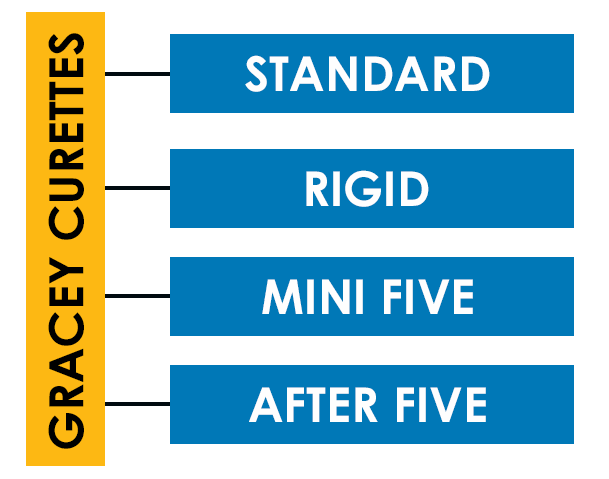
Differences Between Area-Specific and Universal Curette
The blade of the Area-specific curette is curved from head-toe and alongside the cutting edges. In comparison, the universal curette is curved in one direction only. For the area-specific curette, only pull stroke can be used. The pull stroke cleans the tooth surfaces due to the way the blade is designed.
The area-specific dental curettes are designed for use in different areas of the mouth. In contrast to the Universal curette, a single instrument is for use anywhere in the mouth.
Furthermore, Gracey ½ is for use on all aspects of the anterior teeth, including the canines. The shank of the ½ Gracey curette is long to permit access to the lower anterior. This is when the patient is in the supine position.
Moreover, Gracey ¾ is also used in all anterior teeth, but they are also for use on the second bicuspid. Gracey 5/6 is best used interproximally on most teeth up to the second molars.
They are designed for use distally and lingually up to the second bicuspid. However, the angulation of the instrument is such that it limits access to posterior and difficult areas. As a result, the Gracey 7/8 are the most versatile instruments out of the set. They are for use on the buccal and lingual surfaces of the bicuspids and molars.
The remainder of the Gracey range is for root planning posterior teeth with a bias towards molars. The Gracey 9/10 is for use predominantly on buccal and lingual surfaces of molars. These are best in the furcation areas, where access can be difficult. Yet this still allows good control. Finally, the 11/12 and the 13/14 Gracey curette act as a pair. These permit access to the buccal and mesial root surfaces. These Gracey's are for use on Bicuspids and molars.

